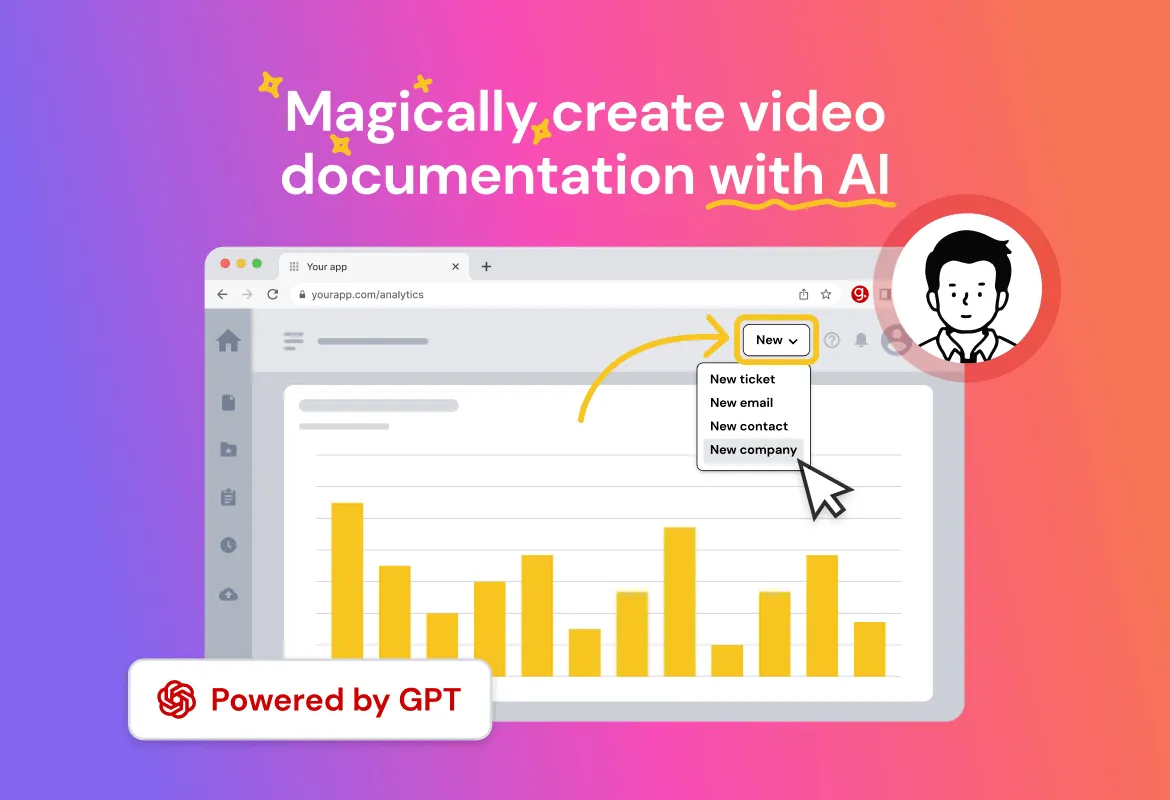How to Drive Customer Adoption With 8 Strategies
Struggling to get clients on board? Unleash the power of your product with key strategies to drive customer adoption and boost success.
Published March 26, 2024.

You poured your heart and soul into your product, a game-changer that will revolutionize how things are done. You launched with a bang, but now... silence. Customers aren't flocking to your door, and downloads are lagging. Where's the excitement?
This initial lack of enthusiasm is a common pitfall, but there's a way out. We'll equip you with a roadmap to overcome hurdles and increase product adoption using expert strategies.
What Is Customer Adoption?
Customer adoption is the process of bringing new users on board. It starts with creating awareness and then progresses through stages of interest and evaluation. Users might try the product—through a trial or free version—and include it in their routines.
Early adoption plays a vital role, particularly by innovative and forward-thinking customers. Their positive experiences can set the stage for broader acceptance by most of the market, and the curve is essential for understanding a product's trajectory.
How Does Driving Product Adoption Affect Success?
You'll be more successful in driving product adoption if you provide targeted support at each step. Additionally, understanding and grouping customers by their needs allows companies to tailor their approach and increase the chances of adoption.
Burger King UK implemented personalized cross-channel messaging, resulting in an 800% increase in conversions. This example showcases the power of targeted engagement in driving product adoption and repeat business.
What Are the Essential Factors for Driving Product Adoption?
Businesses can significantly increase product adoption by focusing on the following factors, leading to sustained engagement and loyalty.
Usability and value: Customers prioritize products that are easy to use and solve their problems. Gartner research shows that 80% consider ease of use critical, highlighting the need for user-friendly solutions that address pain points and minimize frustration.
Clear value proposition and pricing: A compelling value proposition that is easily accessible to potential customers is crucial. McKinsey reports that 70% of B2B clients research independently before buying. Ensure your pricing strategy aligns with the value offered.
Seamless customer support: Gartner also found that 88% of customers expect multiple support channels, as they foster trust and encourage deeper product engagement.
» Learn why customer centricity matters for businesses
8 Strategies to Drive Product Adoption
1. Product Education and Onboarding
Vital product education and onboarding are crucial for user adoption. Educated users understand its value and can leverage its full potential. This reduces the learning curve and addresses common questions upfront.
For example, Adobe Creative Cloud has a comprehensive tutorial library empowers new users to navigate it. The feature improves their experience and fosters deeper engagement as they gain confidence using the software.
Personalization is key. Tailoring onboarding to individuals—like Slack and Zoom—makes the learning experience more relevant and engaging. This showcases the product's flexibility and adaptability, increasing adoption.
Note: Traditional onboarding materials like text documents can be dry and overwhelming for new users. Guidde lets you create engaging video tutorials that walk people through the product step-by-step. These visuals can be more captivating and easier to follow than written instructions.
2. Targeted Marketing and Messaging
Tailored messaging and targeted campaigns are vital to attracting new users. By segmenting your audience—demographics, behavior—you can craft messages that resonate with their needs and pain points.
Example: Netflix uses data to recommend shows and personalize its marketing based on viewing habits. This level of customization makes users feel like the company "gets them," leading to higher engagement. Studies show personalized email subject lines can increase open rates by 26%.
Targeted marketing also helps you spend smarter. Digital tools let you reach users at different stages of the buyer's journey with tailored messages designed to move them toward adoption.
For example, Salesforce creates customer personas and delivers content specific to each persona's needs at every touchpoint. This enhances the client experience, maximizes marketing impact, and leads to higher conversion and adoption rates.
» Discover the best platforms for personalized video responses to customer queries
3. Free Trials and Demos
Free trials, demos, and freemium models reduce the risk of trying a new product, driving customer adoption.
Prospects can directly experience the value proposition without upfront costs. Like Slack's freemium strategy, this hands-on approach lets users see the benefits and justifies a purchase later.
Data shows free trials with upgrade options convert well, highlighting their effectiveness. Similarly, Adobe's free Creative Cloud trials gather user data to personalize onboarding and recommendations. This fosters positive experiences and builds long-term engagement.
Note: Free trials and demos offer a win-win: increased company adoption and valuable customer insights for product improvement. This leads to higher satisfaction and loyalty.
4. User Feedback and Iteration
User opinion is crucial for fostering customer adoption and keeping products relevant. Companies create feedback loops—like Airbnb with photo quality—to gather user input, suggestions, and bug reports. This iterative process improves the product and shows users their voice matters, boosting loyalty.
Analyzing user data can uncover hidden trends and unlock new markets. For example, thanks to client feedback, Slack's internal tool transformed into a global platform.
5. Social Proof
Social proof leverages the influence of user experiences. User reviews, case studies, and social media endorsements showcase the product's value and effectiveness. Imagine potential customers encountering positive experiences from others—it builds trust and validates the product's benefits.
Look at Salesforce. Their thriving online forums and events—like Dreamforce—foster a community where users share success stories, tips, and a sense of belonging. This highlights the product's practical applications and creates a supportive ecosystem, making adoption more attractive.
6. Product Features and Usability
Simplifying the user interface and ensuring the intuitive design can drastically improve adoption. This involves conducting user testing sessions to gather feedback and iteratively refining the product.
Tools like user flow analytics can identify where users struggle and drop off, allowing for targeted improvements. Gartner's emphasis on ease of use suggests integrating onboarding tutorials or guided tours within the product to help new clients navigate and quickly realize the product's value.
7. Value Proposition and Pricing
Make your product's value shine across all platforms. This is especially important when potential customers do their research. Here's how:
- Craft clear and impactful website content that highlights what your product does and why it matters.
- Showcase real-world use cases and customer success stories through social media to connect with potential buyers.
You should also align pricing with value:
- Based on McKinsey & Company's research on B2B self-service journeys, consider offering tiered pricing models to cater to different customer segments and their needs.
- Use A/B testing tools to experiment with different pricing structures and find the one that resonates best with your target audience.
8. Customer Support
Today's customers expect multiple ways to get support. Chat, email, phone calls, and social media are typical. Investing in customer service technologies that connect smoothly across these channels can significantly improve the experience.
Also, a comprehensive knowledge base and FAQs on your website can help users find solutions independently. This enhances their experience, reduces the burden on your support team, and drives product adoption.
Customer Adoption: A Journey, Not a Destination
Driving customer adoption is an ongoing process, not a one-time event. You can cultivate a thriving community around your product by consistently focusing on value communication, providing exceptional support, and adapting to user feedback.
Creating clear and concise video tutorials and walkthroughs with guidde can significantly enhance the onboarding process for new users. These instructional videos can help clients understand the value proposition, core functionalities, and how to get started.

